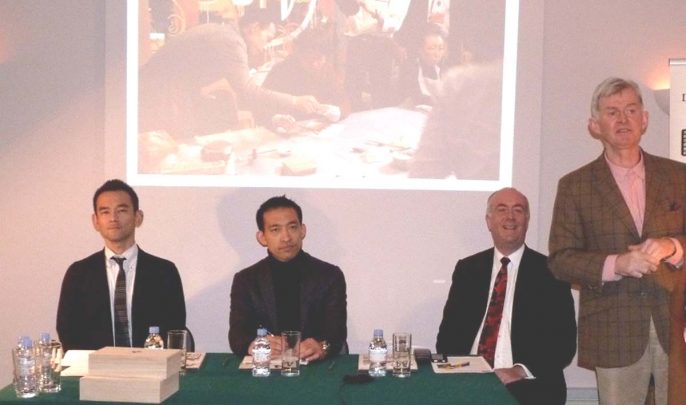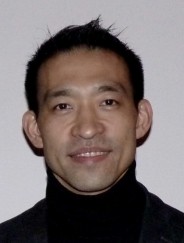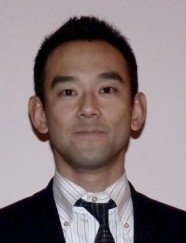 Special event
Special eventThursday 23 January 2014
6:00pm – 7:00pm
Kintsugi: The Art of Broken Pieces
Drinks reception: 7:00pm – 8:00pm
13/14 Cornwall Terrace, Outer Circle, London NW1 4QP
Organised by The Daiwa Anglo-Japanese Foundation
Kintsugi is the craft in which chipped, cracked or broken ceramic pieces are repaired using a combination of urushi (lacquer) and rice glue. This process inadvertently results in a decoration, the form of which is dictated by the breakage the piece has suffered. Powdered gold is usually applied to the repaired patch or seam before the urushi has set, although less embellished repairs can be made by using urushi alone, materials used do vary. Kintsugi can also be applied to glass. Larger repairs are sometimes enhanced by the later application of decorative patterns or illustrations painted with urushi or a fine grade of powdered metal, in a technique known as maki-e.
The craft dates back to at least the 16th century, and there are various engaging historical anecdotes which emphasise the value placed on items pieced back together, particularly tea-ware. The famous tea master Sen no Rikyu was renowned for his appreciation of the Unzan Katatsuki, an exquisite tea bowl, precisely because of the roughness of its repair.
The moment in time when something has been shattered is permanently captured by the painstaking labours of a craftsman in building up the layers of lacquer to repair a piece. It is this reference to the now that recalls mushin, a lack of attachment to anything, but rather being present in the moment, something constantly available to all, but particularly so when we drop a piece of china.
You may watch a recording of the seminar (along with the demonstration at the end) here:
About the contributors

Taizo Yamamoto
Taizo Yamamoto is President of Yamakyu Japanware Co. Ltd., which is a family business that was established in Fukui Prefecture in 1930. After graduating with a Law degree from Keio University in 1993, he worked in the banking sector. He then established the Tokyo office for Yamakyu Japanware in 2005. He is particularly interested in the preservation and restoration of old private houses and the recovery and re-use of ceramic and urushi ware often found in these old buildings.

Takahiko Sato
Takahiko Sato is President of Satokiyomatsu-Shoten Co. Ltd., which is based in Kyoto. Before joining the family firm in 2002, he spent time in El Salvador as part of Japan Overseas Cooperation Volunteers. Sato has since worked in the research and development of MR urushi, a particularly durable form of urushi which has been used in the finish of cars, architecture and furniture. He has been active in gaining recognition for urushi, runs urushi classes, and is personally involved in the training of young artisans.

Professor Timon Screech
Professor Timon Screech is Professor of the History of Art and Head of the School of Arts at the School of Oriental and African Studies (SOAS), University of London. He received his BA from the University of Oxford and after completing his PhD in Art History at Harvard, he joined SOAS in 1991, where he was elected to a Chair in 2006. Concurrently, he is Permanent Visiting Professor at Tama Art University, Tokyo.

Timothy Toomey (Chair)
Timothy Toomey trained and worked as a carpenter and joiner before studying furniture design at Ravensbourne and later industrial design at the Central School of Art and Design. Following a prolonged period working in Italy he moved to Japan, where he became one of the first foreign designers to work successfully and anonymously for Muji. He was invited to become the UK co-ordinator for the Kintsugi project in 2012.